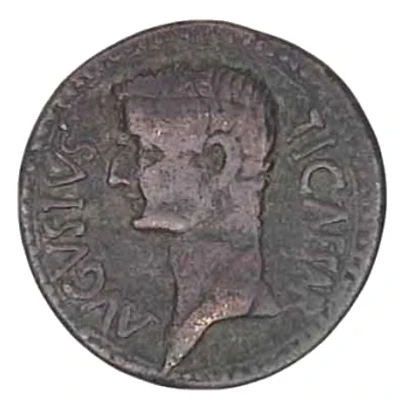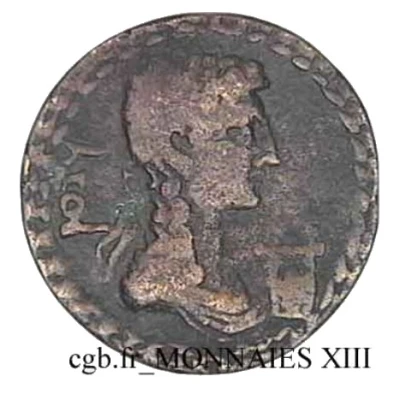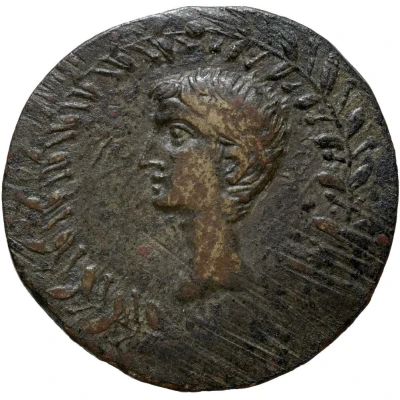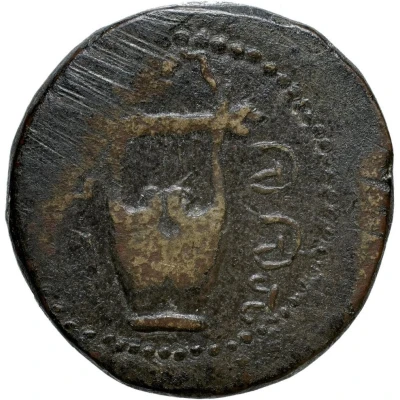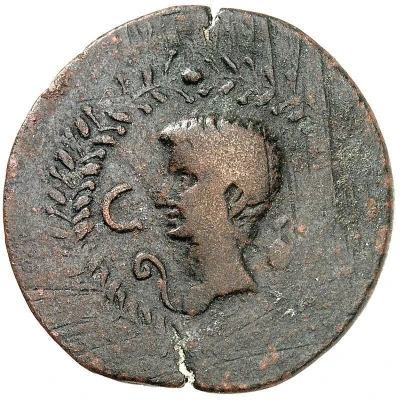
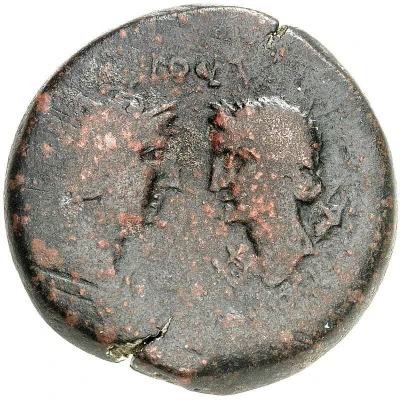

© Heidelberger Münzhandlung Herbert Grün e.K.
Æ30–32 - Augustus Minerva and Apollo 8 BC - 5 BC
| Bronze | 21.45 g | 32 mm |
| Issuer | Oea (Africa Proconsularis) |
|---|---|
| Emperor | Augustus (Caius Octavius) (27 BC - 14 AD) |
| Type | Standard circulation coin |
| Years | 8 BC - 5 BC |
| Composition | Bronze |
| Weight | 21.45 g |
| Diameter | 32 mm |
| Shape | Round (irregular) |
| Technique | Hammered |
| Orientation | Variable alignment ↺ |
| Demonetized | Yes |
| Updated | 2024-10-10 |
| Numista | N#374135 |
|---|---|
| Rarity index | 100% |
Reverse
Helmeted bust of goddess Minerva facing right. Laureate bust of god Apollo facing left, with cithara (ancient stringed musical instrument) and quiver on shoulder. Beaded rim.
Script: Neo-Punic
Lettering:
𐤅𐤉𐤏𐤕
𐤈𐤈𐤉 𐤔𐤏𐤅𐤒
Edge
Bevelled
Comment
Weight: 21.45 g average of 4 specimens (RPC III# 826; MAA#23)Diameter: 32 mm (RPC III# 826); 30–31 mm (MAA#23)
Denomination: possibly a sestertius of 4 asses (RPC III# 826) or a dupondius of 2 asses (MAA#23)
Reverse inscription:
𐤅𐤉𐤏𐤕 (wyᶜt) above, in neo-Punic script, written right to left. Translates to Oea, the name of the city.
𐤈𐤈𐤉 𐤔𐤏𐤅𐤒 (ṭṭy šᶜwq) around, in neo-Punic script written right to left, representing the names of the two suffetes (magistrates). Müller wrongly assumes they represent the allied cities of Zitha (𐤈𐤈𐤉 / ṭṭy) and Zuchis (𐤔𐤏𐤅𐤒 / šᶜwq).
Interesting fact
One interesting fact about this coin is that it features the Roman goddess Minerva on one side and the god Apollo on the other, highlighting the cultural influence of the Roman Empire on the city of Oea (modern-day Tripoli) in Africa Proconsularis.
